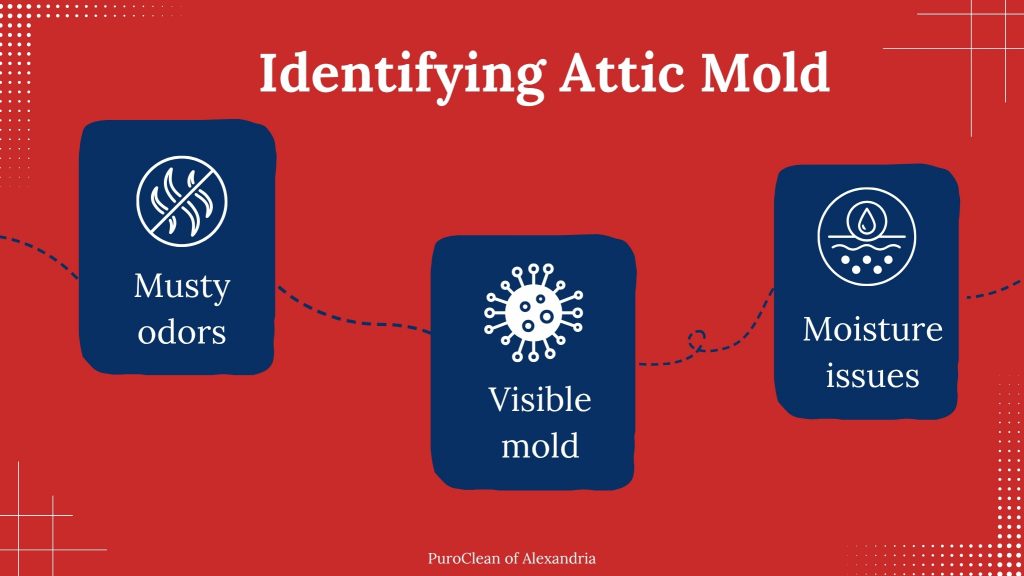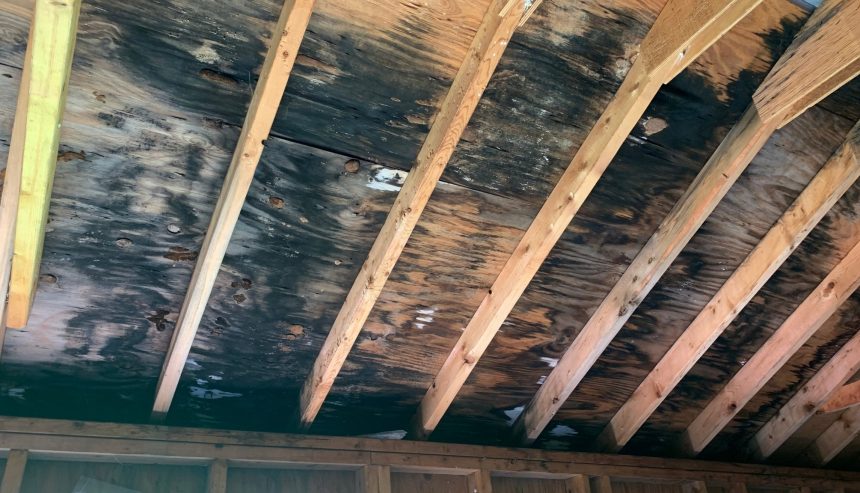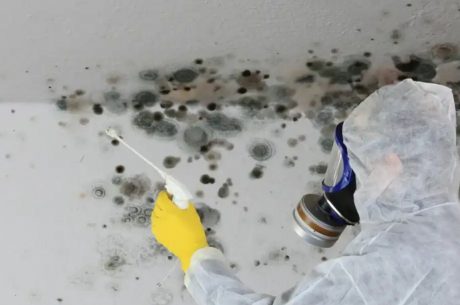The attic mold Alexandria isn’t something you can safely overlook. Though hidden away, mold in your attic poses significant health and structural risks, especially given Alexandria’s humid, mold-friendly climate.
In this blog, we’ll dive into exactly why attic mold deserves your immediate attention, explore the warning signs every homeowner should recognize, and outline practical steps you can take to address the issue effectively.
Understanding Attic Mold in Alexandria
Attic mold is a type of fungus that grows in dark, damp environments like the attic spaces of homes. Mold spores thrive when moisture levels are high, making attics a perfect breeding ground. In Alexandria, some common mold species you might find include:
- Black mold (Stachybotrys): Known for its toxicity and dark appearance.
- Aspergillus: A common allergenic mold that grows quickly.
- Cladosporium: Often greenish-black and commonly found on damp wood and insulation.
Why Does Attic Mold Thrive in Alexandria?
Alexandria’s climate is known for its warm, humid summers, and these conditions are precisely what mold needs to flourish. Moisture can easily become trapped in attics, especially in homes with poor ventilation, insufficient insulation, or undetected roof leaks.
Common structural factors in Alexandria homes that contribute to mold growth include:
- Improper attic ventilation.
- Inadequate or deteriorating insulation.
- Damaged or aging roofing materials.
Why Ignoring Attic Mold Is Dangerous
Many homeowners underestimate the impact of attic mold Alexandria homes often develop, seeing it as merely a cosmetic issue. However, neglecting attic mold can result in significant consequences for your family’s health, home structure, and finances. Here’s why:
1. Health Consequences of Attic Mold
Mold isn’t simply unattractive; it can pose genuine health risks. Exposure to attic mold Alexandria families may unknowingly live with can be especially dangerous in confined spaces like attics, where air circulation is poor.
Common health issues caused by mold exposure include:
- Respiratory Problems: Persistent coughing, wheezing, difficulty breathing, worsening asthma symptoms, and recurring respiratory infections.
- Allergic Reactions: Sneezing, itchy and watery eyes, nasal congestion, headaches, fatigue, and skin irritations.
- Chronic Health Concerns: Long-term exposure can lead to more severe respiratory conditions, including chronic bronchitis, persistent sinus infections, and heightened asthma attacks.
Addressing mold early can significantly reduce these risks, helping ensure your family stays healthy and comfortable.
2. Structural and Financial Risks
Attic mold is more than a health issue; it also leads to mold damage in attic spaces that can compromise your home’s structural integrity. Mold thrives on organic materials, leading to substantial damage if left unchecked.
Structural issues caused by mold growth include:
- Wood Rot and Weakening: Mold deteriorates wooden support beams and framing, jeopardizing your home’s stability over time.
- Insulation Damage: Mold-infested insulation loses effectiveness, resulting in poor temperature control and increased energy bills.
- Roofing and Ceiling Damage: Persistent moisture and mold lead to mold damage in attic roofing layers, increasing the likelihood of leaks and costly repairs.
Moreover, mold significantly affects your home’s market value. Homebuyers are wary of properties with mold infestations, leading to difficult sales, lower offers, and even insurance coverage complications.
3. Rapid Mold Spread and Rising Costs
The attic mold Alexandria homeowners deal with can grow rapidly, especially in a humid climate. What initially seems like a minor issue can become a severe infestation in a short period, sometimes within weeks. Mold colonies expand quickly, and mold damage in attic spaces can grow from a minor issue to widespread deterioration, driving up remediation and repair costs.
The cost difference is substantial:
- Early mold detection and remediation can be relatively affordable.
- Ignored mold, however, can lead to widespread contamination, increasing the expense of mold removal, structural repairs, and home restoration significantly.
Acting early doesn’t just save you money; it protects your health, home, and peace of mind.
Identifying Attic Mold in Alexandria
Recognizing the signs of mold early can save you stress, money, and potential health problems.
Key Warning Signs Include:
- Musty odors: Mold often produces a damp, musty smell, noticeable even in rooms below the attic.
- Visible mold: Look for dark or fuzzy patches on attic surfaces or insulation.
- Moisture issues: Condensation, water stains, or dampness in your attic signal a high likelihood of mold.
Why Early Detection Matters
Identifying mold early simplifies remediation and dramatically reduces the risk of structural damage and health complications. Quick action prevents mold from spreading, significantly lowering overall costs and disruption.

Conclusion
Ignoring attic mold Alexandria homes may harbor is never safe or smart; it poses significant risks to your family’s health and your home’s structural integrity. Proactive management is key. Attic mold in Alexandria won’t disappear on its own; it requires immediate attention and professional intervention.
If you’ve noticed musty smells, signs of moisture, or visible mold in your attic, don’t wait. Schedule a mold inspection with a trusted local expert in Alexandria and take the first step toward a safer, healthier home.
FAQs
Q1. How do I know if there is mold in my attic?
A: Common signs include musty odors, visible mold spots or discoloration, moisture stains on wood or insulation, and increased allergy symptoms in household members.
Q2. Is attic mold really harmful?
A: Yes. Mold exposure can trigger allergies, asthma, and other respiratory problems, especially in vulnerable individuals like children and the elderly. Additionally, mold can significantly damage your home’s structure.
Q3. Why are Alexandria homes susceptible to attic mold?
A: Alexandria’s warm, humid climate creates ideal conditions for mold growth. Poor ventilation, inadequate insulation, or roof leaks are common in many older homes and can further encourage mold issues.
Q4. Can I remove attic mold myself?
A: While minor surface mold may be manageable, professional remediation is recommended. Professionals safely identify, remove, and prevent future mold growth by addressing underlying moisture issues.
Q5. How long does mold remediation take?
A: Typical attic mold remediation takes anywhere from 1-5 days, depending on the infestation’s size and complexity. Severe cases may take longer.




 PuroClean of Alexandria
PuroClean of Alexandria